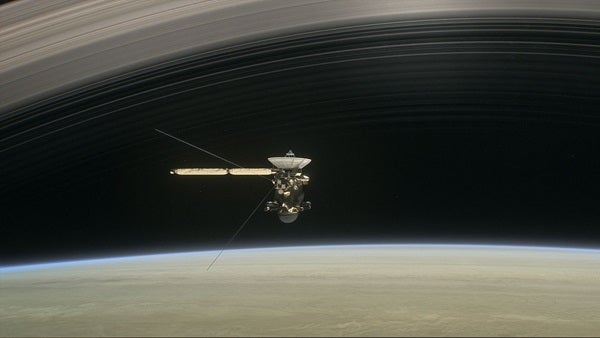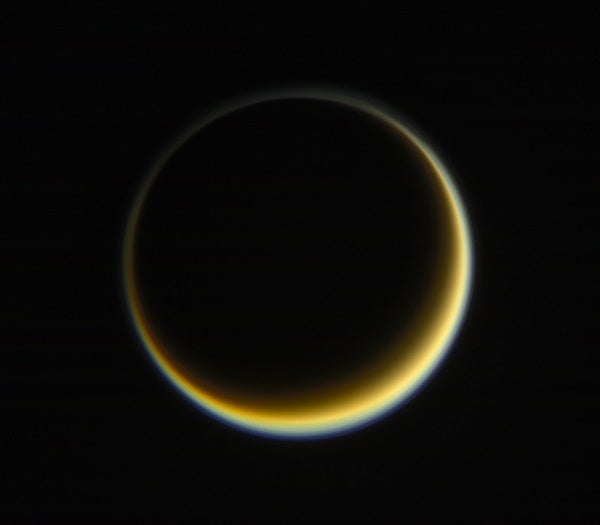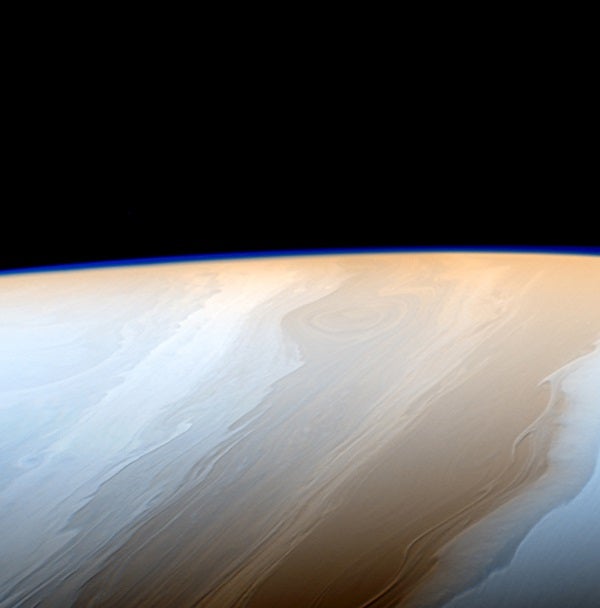On August 13, Cassini completed the first of five close passes over Saturn, skimming the giant’s atmosphere at a height of just over 1,000 miles (1,600 kilometers). That’s close enough to require the spacecraft to utilize its thrusters to maintain its course as it travels through denser portions of the atmosphere than before. However, Cassini has had practice at such maneuvering, thanks to previous close passes over Titan, which itself is shrouded in a thick atmosphere.
Cassini’s last encounter with Titan will take place September 11, when the moon’s gravity will be used to tug the spacecraft into a trajectory that will end with its death plunge into the atmosphere of Saturn on September 15. That final encounter is the last chapter in a story that’s included numerous gravity assists from the moon, which have, in large part, made the mission what it is. Thanks to the ability of Cassini to use Titan’s gravity to modify its orbit, the spacecraft was able to carry less fuel and use that fuel more sparingly, increasing the science return possible from this landmark mission.
Cassini’s last close pass to the moon was April 22, when flew 608 miles (979 kilometers) above the surface to take radar data. That data added detail to the growing global picture of Titan, and included coverage of some of the very first terrain imaged during the spacecraft’s first flyby of the moon in 2004. Scientists will use the most recent radar data to measure the depths of some of Titan’s north polar lakes, as well as determine whether they contain liquid methane or ethane.












